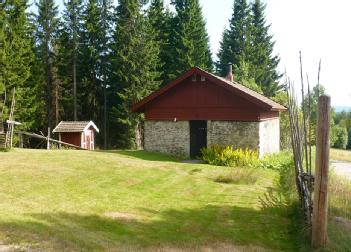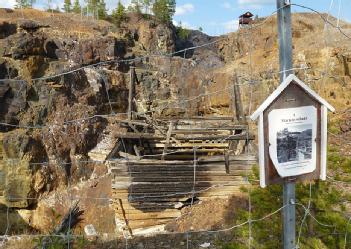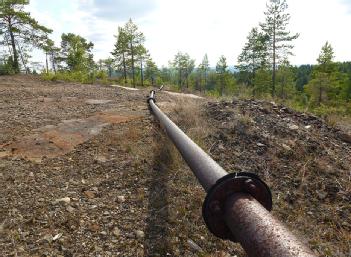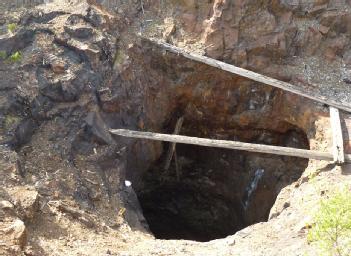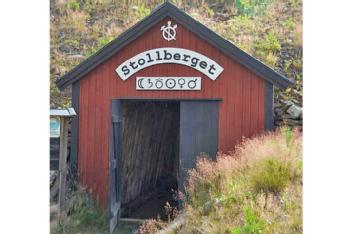
Stollbergs gruva |
77791 Norrbärke (Smedjebackens), Schweden (Dalarna) |
|
| Anschrift |
|
| Ausstellungsfläche | - leider noch nicht bekannt |
|
Öffnungszeiten
|
Self-guided tour all. Well signposted. Well marked path. A watchtower from the top of the mine. Guided tours can be booked.
Området är fritt tiltgängligt för allmänheten. Även stollgångarna kan beses, men enbart med guide.
|
||||
|
Stand von 11/2019
|
Free entry. Freier Eintritt. |
||||
| Kontakt |
|
||||
| Homepage | ekomuseum.se/en/besoksmalen/stollbergs-gruva | ||||
| Lage / Anfahrt |
Stollbergs Bergbaugebiet oder Stollberget (ursprünglich Väster Silvberg genannt) liegt westlich des Starensees, etwa 9 Kilometer nordwestlich von Smedjebacken in der Gemeinde Norrbärke im Süden von Dalarna. Schließlich umfasste das Bergbaugebiet eine Länge von 10 Kilometern mit einem zentralen Teil von fünf Kilometern. Das Gebiet, das heute unter Denkmalschutz steht, liegt inmitten der Kulturlandschaft und erstreckt sich von Schisshyttan im Norden bis nach Silvhyttan im Süden. In der Nähe befindet sich der Wanderweg von Schisshyttan, der auch zum Ekomuseum Bergslagen gehört. |
|||
| Lage / Anfahrt (other) |
Stollbergs gruvområde eller Stollberget (ursprungligt namn Väster Silvberg) ligger väster om sjön Staren, cirka 9 kilometer nordväst om Smedjebacken, i Norrbärke socken, i södra Dalarna.
Så småningom omfattade gruvområdet en längd av 10 kilometer med en central del av fem kilometer. Området, som numera är ett fornminne ligger mitt i odlingslandskapet och sträcker sig från Schisshyttan i norr till Silvhyttan i syd. I närheten går numera Schisshyttans vandringsled som även den är en del av Ekomuseum Bergslagen. |
|||
| Beschreibung | Wikipedia: Das Feld Stollberg wurde am 28. Februar 1982 stillgelegt und ist heute Teil des Ekomuseum Bergslagen. Einige Gegenstände wie Lokomotiven, Schienen und Wagen wurden dem Bergbaumuseum Ludvika gespendet. Schächte und Minen |
| Beschreibung (other) |
Wikipedia: Stollbergsfältet lades ner den 28 februari 1982 och är idag en del av Ekomuseum Bergslagen. En del föremål som lok, räls och vagnar donerades till Ludvika gruvmuseum. Kvar finns bland annat ett imponernade dagbrott, ett stort antal gruvhål, maskinhus, gruvstuga, ruiner efter gruvbebyggelse och en hyttruin med en silverslagghög samt en restaurerad ladugård i slaggsten från 1850-talet. Schakt och gruvor Bland större schakt- och gruvanläggningar märks: |
[dsp_museum_detail.cfm]
| Datenkonformität | Mehr Informationen |
